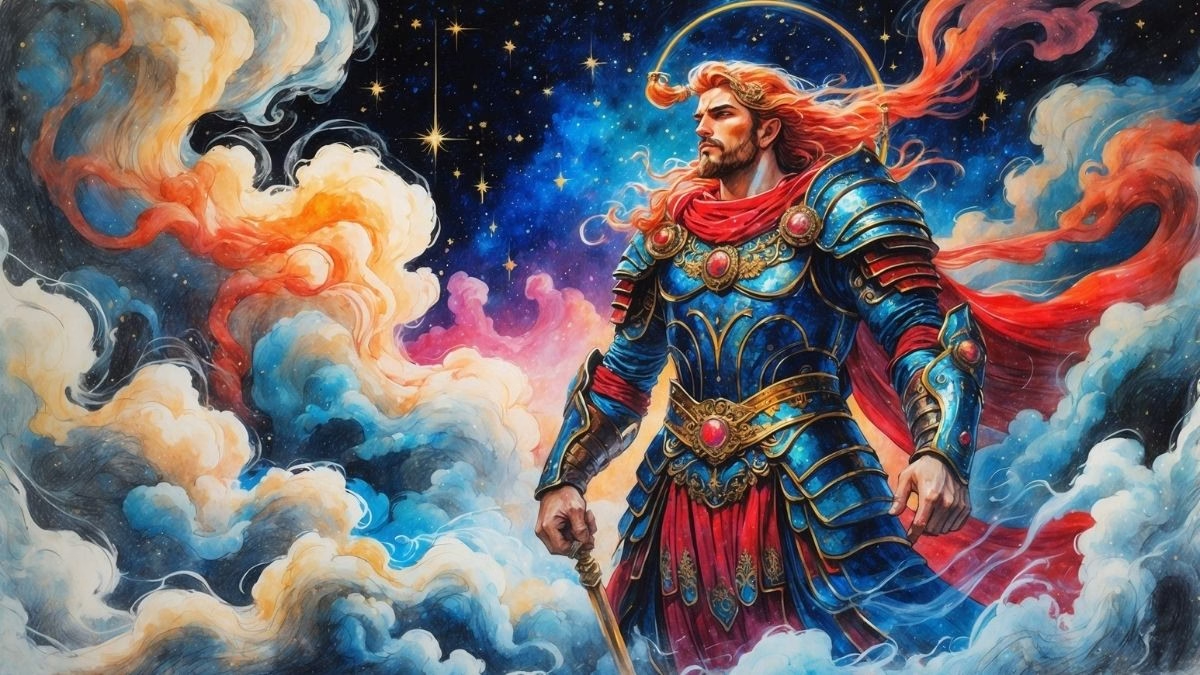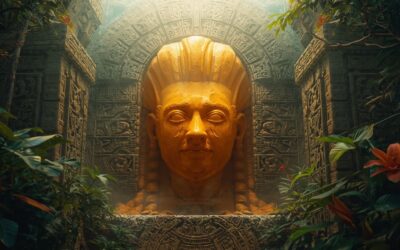A Warrior in the Night Sky
Have you ever looked up at the night sky, spotted that distinct, rusty-red spark of light, and wondered what stories it could tell? For millennia, that celestial body we call Mars has captivated the human imagination. The Greeks and Romans saw Ares and Mars, gods of brutal, savage warfare. But what if I told you that in another great empire, that of ancient Persia, they looked at that same crimson dot and saw something else? Not just a god of war, but a champion of truth, a guardian of the righteous, and a symbol of ultimate victory. Let’s journey back in time and uncover the incredible Persian myth of Verethragna, or as he became known, Bahram, the Crimson Warrior.
More Than a God, a Divine Champion
First things first, in the world of Zoroastrianism, the ancient religion of Persia, you don’t really have “gods” in the polytheistic sense. You have one supreme creator, Ahura Mazda (the Lord of Wisdom), and then you have a host of divine beings, or angels, called Yazatas, which means “ones worthy of worship.” These are the personifications of divine concepts. And one of the most popular, most revered of them all was Verethragna, whose name literally means “smasher of resistance.” He is the divine embodiment of victory. Not just military victory, but victory over evil, victory over falsehood, victory over despair. He is Ahura Mazda’s divine enforcer, a celestial special agent sent to ensure that good prevails.
The Ten Forms of the Victorious One
Here’s where the story gets incredibly cool and cinematic. Bahram isn’t a static figure. To do his job, he has the power to transform into ten different forms, each one perfectly suited to the challenge he faces. Think of him as the original divine shapeshifter. He can appear as a mighty and beautiful wind, unstoppable and cleansing. He can become a bull with horns of gold, a symbol of pure strength. He can manifest as a stunning white horse with golden ears, representing speed and nobility. He can even become a camel, prickly and aggressive but able to endure the harshest conditions, or a powerful boar, charging headfirst at his enemies.
Man, Bird, and Ram: The Warrior’s Arsenal
The transformations don’t stop there. He can take the form of a handsome fifteen-year-old youth—the ideal of human vitality and potential. He can become a Veragna bird, a swift and powerful raptor, whose feathers could be used as a protective charm against misfortune. If he needs to be fierce and unyielding, he can become a wild ram. Each form wasn’t just a disguise; it was a manifestation of a specific kind of power needed to vanquish a particular evil. This tells us so much about the ancient Persian worldview: victory wasn’t a one-size-fits-all concept. It required adaptability, wisdom, and drawing on different kinds of strength, from brute force to swift elegance.
The Crimson Warrior and the Red Planet
So, how did this victorious yazata get associated with the planet Mars? In later periods of Persian history, particularly as astrology became more influential, the Zoroastrian yazatas were linked to the celestial bodies. The fiery, assertive, and combative nature of the Red Planet made it the perfect celestial counterpart for Bahram. Mars became Bahram’s Star. When Persians looked up and saw it glowing redly in the night, they didn’t just see a planet; they saw the celestial home of their divine champion. It was a reminder that the fight for truth and righteousness was not just an earthly struggle but a cosmic one, and they had a powerful ally watching over them from the heavens.
Bahram’s Battle: A Fight Within Us All
The myths of Bahram weren’t just epic fireside stories about a celestial superhero. They were deeply psychological and moral tales. Bahram’s primary enemy was Angra Mainyu, the destructive spirit, and all his demonic minions who represented lies, cowardice, and despair. The battle between Bahram and these forces was a metaphor for the internal struggle every human being faces. Choosing truth over lies, courage over fear, hope over despair—that is invoking the spirit of Bahram. He represented the idea that victory wasn’t just given; it had to be won, both in the world and within your own soul. The ten forms he took could be seen as the different virtues we need to cultivate within ourselves to overcome our own inner demons.
The Lasting Legacy of the Victorious One
While the vast Zoroastrian empire is a thing of the past, the spirit of Bahram endures. His stories are a testament to a culture that valued courage, truth, and the relentless pursuit of righteousness. They show us a people who saw the universe not as a cold, empty space, but as a vibrant stage for a grand moral drama. The Persian myth of Bahram gives us a different lens through which to see that red dot in the sky. It’s not just a symbol of war, but a symbol of the victory of the human spirit.
So the next time you find yourself gazing at the night sky and you spot that fiery red planet, take a moment. What kind of strength do you need in your life right now? The strength of the wind, the bull, the horse, or the hero?
Let me know in the comments below which of Bahram’s forms resonates with you the most.










0 Comments